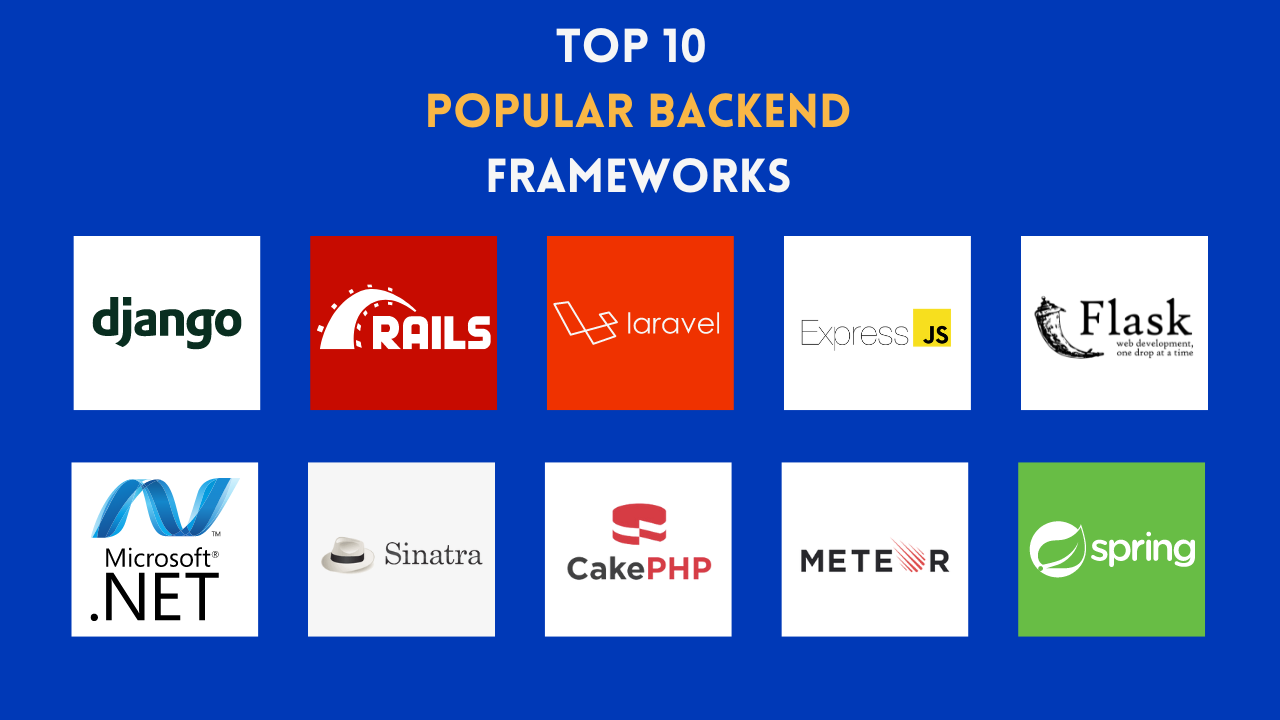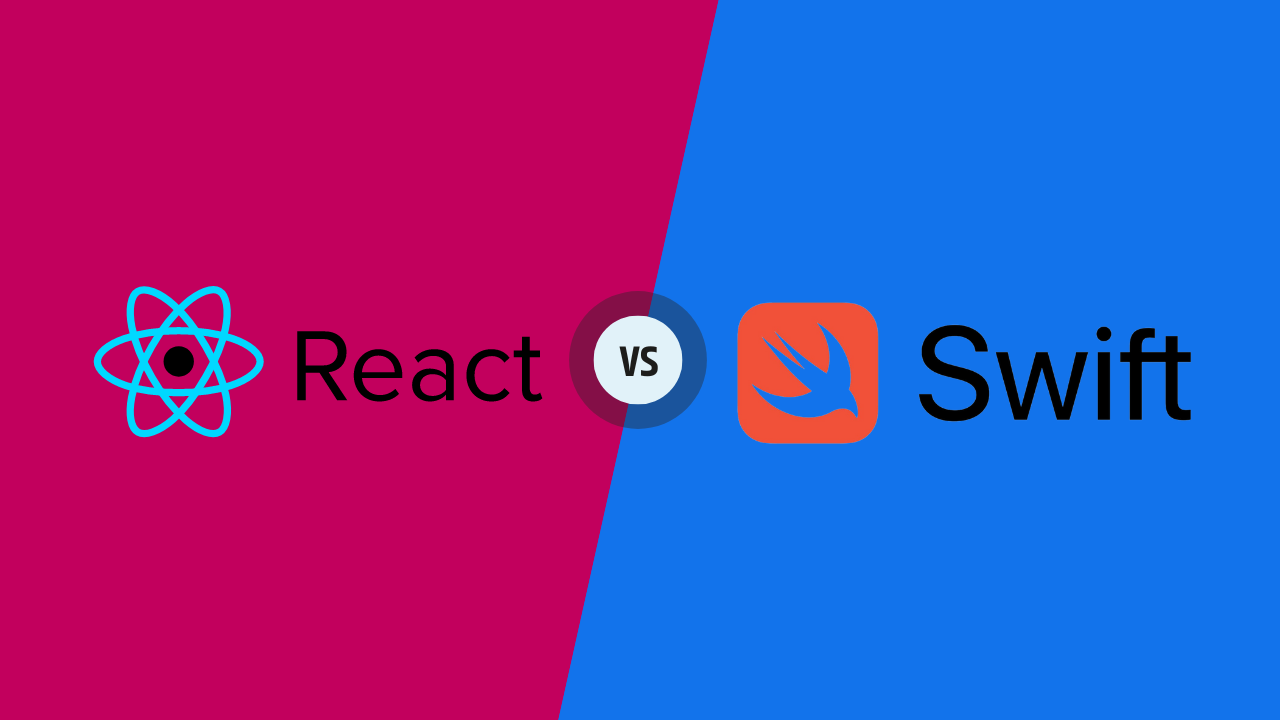Web development has become an essential aspect of creating a digital presence in today’s world. Popular backend frameworks have emerged as essential tools for web development. With the growing demand for web applications, a wide range of web frameworks has emerged to make the development process easier and more efficient.
From full-stack frameworks like Ruby on Rails to micro frameworks like Flask, these tools provide a comprehensive solution for building and deploying web applications. They offer a range of features and benefits, such as modular architecture, security, and integrations with other technologies, to help you create high-quality, scalable web applications.
Whether you’re building one-page applications or dynamic and interactive web apps, choosing the right backend framework is crucial for your business. In this article, we will take a closer look at some of the most popular backend frameworks and what makes them stand out from the crowd. Optymize can help you understand your project requirements and choose the best backend framework for your business.
What is a framework?
A framework is a set of rules, guidelines, and standards for organizing and developing code in a specific programming language or platform. The aim of using a framework is to promote code reuse and modularity. It provides a structure to build and run applications. It also offers pre-written code and tools to simplify and speed up the development process.
What is a web framework?
A web framework is a software to support the development of dynamic websites, web applications, and web services. It provides a structure for building web applications and includes libraries and tools for handling common tasks such as routing, security, data storage, user authentication etc.
Some examples of popular web frameworks are Django, Ruby on Rails, Express (for Node.js), Flask (for Python), and Laravel (for PHP).
What are the different types of frameworks?
Web frameworks
A web framework is specifically designed for developing web applications and services, such as Django, Ruby on Rails, and Flask.
Mobile app frameworks
If your business needs a mobile application to reach out to a wider audience, then choose a mobile apps framework like React Native and Ionic to develop your mobile applications.
Game development frameworks
The name itself suggests that businesses use game development frameworks like Unity and Unreal Engine for creating video games.
Machine learning frameworks
How do you think companies are developing and training machine learning models? By using some of the frameworks like TensorFlow and PyTorch.
These are just some of the popular types of frameworks. Many other types of frameworks are also available such as Testing Frameworks, Microservices Frameworks, and UI Component Frameworks. But in this blog, we will mostly learn about the backend framework.
Let’s learn what is a backend framework, its benefits and the list of the most popular backend frameworks.
What is a backend framework?
A backend framework is a software framework specifically designed for building the server side of a web application. It provides the tools and structures to handle server-side tasks, such as database management, API creation, and server-side rendering and is responsible for storing, retrieving and processing data, and serving it to the front end of an application. Examples of popular backend frameworks are Django (Python), Ruby on Rails (Ruby), Express (Node.js), Laravel (PHP) and Flask (Python).
What are the benefits of using backend frameworks?
Productivity
Most popular backend frameworks like Laravel framework and Ruby on Rails framework provide pre-built components and tools. They enable developers to focus on writing business logic and reduce the amount of code that needs to be written from scratch. In turn, it increases productivity.
Scalability
Most popular backend frameworks offer scalability. It makes it easier for businesses to handle increasing amounts of traffic and data.
Security
Most popular backend frameworks include built-in security features, such as protection against common attacks like SQL injection and cross-site scripting.
Maintainability
Popular backend frameworks like Flask, Ruby on Rails, Express etc. provide a clear structure and separation of concerns. From the developers’ POV, it gets easier to maintain and update applications over time with maintainability.
Community support
Many popular backend frameworks have large communities of developers, providing access to a wealth of resources, tutorials, and support.
Testing
Popular backend frameworks like Ruby on Rails include tools and structures for testing. For developers, it gets easier to catch and fix bugs and improve code quality.
Performance
How do backend frameworks increase the performance of your applications? Because they allow businesses with fast and efficient handling of data and API requests leading to the optimization of your web apps with better performance.
Tip: An experienced and rigorously vetted backend developer can definitely give an edge to your business. Contact us for hiring the top 3% of backend developer.
The List of Top 10 Popular Backend Frameworks
Django
Django is a high-level, full-stack web framework for the Python programming language. This popular backend framework offers a clean and pragmatic design, making it an efficient and effective solution for building web applications. Django’s focus on rapid development allows businesses to quickly create and launch their projects, without sacrificing quality or functionality.
Features
- Object-relational mapping (ORM) for database integration
- Built-in administrative interface
- URL routing
- Security features such as protection against cross-site scripting (XSS) and SQL injection attacks
- Middleware support
Benefits
- Versatile and can handle a variety of web applications, from content management systems to social networks
- Scalable, allowing you to add new features as needed
- Provides a lot of built-in functionality, reducing the amount of code you need to write
- Has a large, supportive community
Ruby on Rails
Ruby on Rails, commonly referred to as Rails, is a powerful web application framework written in the Ruby programming language. This full-stack framework is designed to simplify the development process for building dynamic web applications. This popular backend framework follows the Model-View-Controller (MVC) architectural pattern, providing structure and organization to your web projects.
Features
- Model-View-Controller (MVC) architecture
- Conventions over configuration, reducing the amount of code you need to write
- Built-in support for database migrations
- Dynamic, interactive, and easy-to-read code
- Active Record pattern for database interaction
Benefits
- Offers a rapid development environment, allowing you to get a basic web application up and running quickly
- Large and active community, providing support and a wealth of resources
- Well-suited for Agile development
- Good for prototyping, enabling you to quickly test new ideas
Laravel
Laravel is a free, open-source PHP web framework designed to make it easier to build modern, robust, and maintainable web applications.
Features
- Model-View-Controller (MVC) architecture
- Artisan command-line interface (CLI) for speeding up repetitive tasks
- Eloquent ORM for database integration
- Built-in task scheduling and queue management
- Robust routing and middleware system
Benefits
- Offers a clean and elegant syntax, making it easier to write and maintain code
- Provides a lot of pre-built functionality, reducing the amount of code you need to write
- Has a large and supportive community, with many tutorials and packages available
- Offers a high level of security, with features such as password hashing and encryption built-in.
Express
Express is a minimal and flexible web application framework for Node.js, known for its robust set of features and ease of use. This popular backend framework provides a comprehensive solution for building single and multi-page web applications, with a focus on simplicity and efficiency. Express is designed to make the development process faster and more streamlined, by providing a minimal and unopinionated framework that can be easily customized to meet the specific needs of your project.
Features
- Middleware support
- HTTP utility methods
- Routing
- Dynamic view rendering
- Built-in error handling
Benefits
- Lightweight and fast
- Easy to learn for developers with JavaScript experience
- Good for building small to medium-sized applications
- Large and active community, with many tutorials and packages available
Flask
Flask is a micro web framework written in Python that provides a simple and flexible way to build web applications.
Features
- Minimal design
- Built-in development server and debugger
- Support for secure cookies
- Ability to use any WSGI-compatible library
- URL routing
Benefits
- Lightweight and easy to get started with
- Good for small to medium-sized projects
- Provides complete control over the application, making it easy to add custom functionality
- Large and active community, with many tutorials and packages available
- Provides a high level of flexibility, allowing you to choose the libraries and tools you want to use.
ASP.NET
ASP.NET is a server-side web framework developed by Microsoft for building web applications using the .NET framework and the C# programming language.
Features:
- Support for multiple programming languages
- Built-in security features
- Integration with Microsoft tools and technologies
- Large class library
Benefits:
- Easy integration with other Microsoft products
- Support from a large developer community
- Scalability
Sinatra
Sinatra is a minimalistic web framework designed for the Ruby programming language, ideal for small to medium-sized projects. This popular backend framework is lightweight and provides a simple and flexible way to build dynamic web applications. Sinatra’s focus on simplicity makes it a great choice for businesses to quickly and easily build applications without the need for a heavy framework.
Features:
- Support for multiple routes
- Easy integration with other Ruby libraries
- Clean and concise syntax
Benefits:
- Speed and ease of development
- Small footprint for fast performance
CakePHP
CakePHP is a robust, open-source web framework that simplifies the development process for building dynamic web applications. Adhering to the Model-View-Controller (MVC) architecture, this popular backend framework provides a scaffolding mechanism for a quick start on any web project. This backend framework enables businesses to focus on creating unique and personalized functionality for applications, instead of spending time on repetitive tasks.
Features
- Built-in security features
- Support for multiple databases
- Comprehensive class library
Benefits
- Easy to learn and use for PHP developers
- Provides a well-organized structure for web applications
- Large and active community
MeteorJS
MeteorJS is a full-stack, real-time web framework for building fast and dynamic web applications. This popular backend framework is designed to make the development process easier and more efficient, by providing a single platform for both client-side and server-side code. MeteorJS is built with speed and scalability in mind, making it an ideal solution for projects that require real-time updates and data exchange.
Features
- Real-time data updates
- Hot code reloading
- Comprehensive package system
Benefits
- Fast development cycles
- The unified codebase for both client and server
- Large and active community
SpringJS
SpringJS is a Java-based, full-stack framework for building robust and scalable web and enterprise applications. This popular backend framework is built on top of the popular Spring framework and leverages its extensive library of modules and components to provide a comprehensive solution for web development. SpringJS is designed to make the development process easier and more efficient, by providing a single platform for both client-side and server-side code.
Features
- Modular architecture
- Support for multiple data sources
- Wide range of security options
Benefits
- Large and active community
- Flexible and modular design
- Good performance
- High level of customization.
Popular Backend Frameworks – FAQ
What is a backend framework and why do I need one?
A web framework is a software platform that provides a structure for building and deploying web applications. It helps streamline the development process by providing common functionality, such as URL routing and database access, so developers can focus on building the unique features of their applications.
What are the different types of popular backend frameworks?
There are several types of web frameworks, including full-stack frameworks, micro frameworks, API frameworks, MVC frameworks, and serverless frameworks. Each type of framework is designed for a specific purpose and has its own strengths and weaknesses.
How do I choose the right backend framework for my project?
Choosing the right web framework for your project depends on several factors, including the size and complexity of your project, your team’s expertise, and the desired performance characteristics of your application. You should also consider factors such as the level of support and community involvement for the framework you are considering.
Can I use multiple backend frameworks in a single project?
Yes, you can use multiple web frameworks in a single project, but it is generally not recommended as it can lead to compatibility issues and make the project more difficult to maintain. If you need to use multiple frameworks, it’s best to choose frameworks that complement each other and can work together seamlessly.
Is it necessary to have programming experience to use a backend framework?
Yes, having programming experience is necessary to use a web framework. While some frameworks may have a more user-friendly interface, they still require a basic understanding of programming concepts and the programming language used by the framework. If you are new to programming, it may be helpful to start with a beginner-friendly language and framework before moving on to more advanced options.







